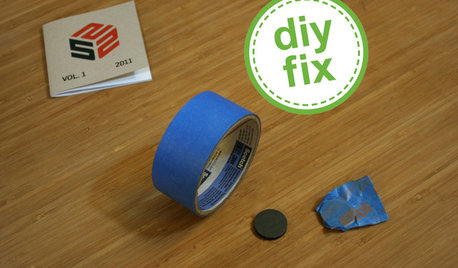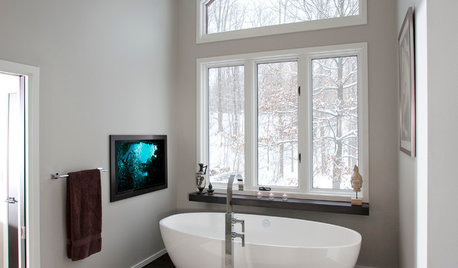Ideas for fishing a wiire horizontally across a couple stud bays
fotostat
15 years ago
Featured Answer
Comments (12)
brickeyee
15 years agofotostat
15 years agoRelated Professionals
Auburn General Contractors · Clarksville General Contractors · El Sobrante General Contractors · Grand Junction General Contractors · Hartford General Contractors · New Baltimore General Contractors · Parsons General Contractors · Rolla General Contractors · Villa Park General Contractors · Waxahachie General Contractors · Sun Prairie Solar Energy Systems · Park Ridge Home Automation & Home Media · Thornton Home Automation & Home Media · Wheaton Home Automation & Home Media · Winchester Home Automation & Home Mediaspencer_electrician
15 years agojoed
15 years agobus_driver
15 years agojoefixit2
15 years agopjb999
15 years agofotostat
15 years agojoefixit2
15 years agopjb999
15 years agobus_driver
15 years ago
Related Stories

DECORATING GUIDESQuick Fix: Find Wall Studs Without an Expensive Stud Finder
See how to find hidden wall studs with this ridiculously easy trick
Full Story
BEFORE AND AFTERS7 Dramatic Bathroom Makeovers Across All Styles
You'll be amazed at these bathroom transformations, spanning different design tastes, budgets and remodeling approaches
Full Story
VACATION HOMESMy Houzz: Saltbox Charm in a Heritage Fishing Community
This rustic home and art studio in a 16th-century waterfront town blend in while showing personal style
Full Story
MOST POPULARHow to Add a Backyard Shed for Storage or Living
Need a home office, a playspace or extra room for your stuff? Learn about off-the-shelf, prefab and custom sheds
Full Story
ARCHITECTUREDesign Workshop: The Intriguing Effects of Exposed Framing
Reveal the structure of your home for interesting design opportunities and eye-catching visual effects
Full Story
ARTFrom the Artist: How to Make a Real Mobile
It’s all in the balancing points: A top mobile designer shows how to create a Calder-inspired installation of your own
Full Story
ARCHITECTUREHouzz Tour: Sturdy Enough for a Tsunami
Storms don't scare this Washington state home; breakaway features and waterproof finishes let it weather high winds and waves
Full Story
ARCHITECTURE10 Advantages of the Humble Ranch House
Boomer-friendly and not so big, the common ranch adapts to modern tastes for open plans, outdoor living and midcentury mojo
Full Story
FARM YOUR YARDHow to Grow Vegetables in Containers
Get glorious vegetables and fruits on your patio with a pro’s guidance — including his personal recipe for potting mix
Full Story
ECLECTIC HOMESHouzz Tour: Playful Style Reinvents a Childhood Home
You really can go home again, especially when you redecorate with classic, modern and quirky pieces that suit your style
Full StorySponsored
Professional Remodelers in Franklin County Specializing Kitchen & Bath
More Discussions










brickeyee